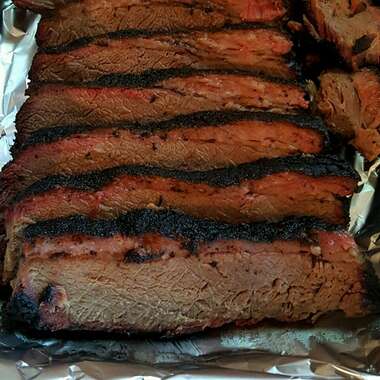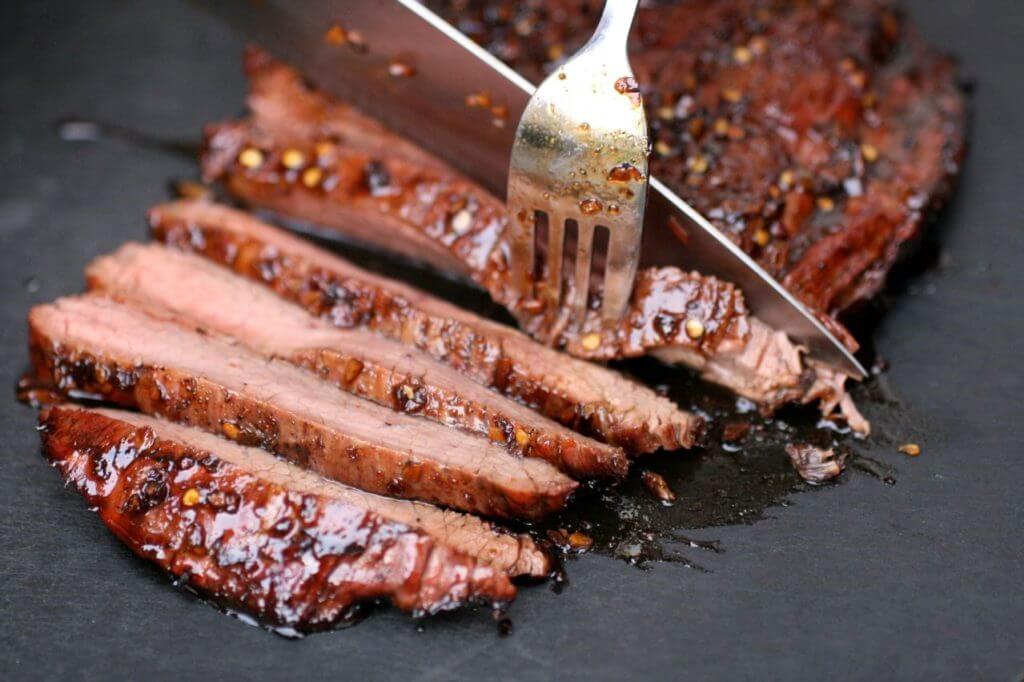
Hickory, sugar maple and Hickory make excellent pork smokers. Peach and Pecan woods can also be used. These woods all have unique flavor profiles that will make delicious smoked pork. Learn how to smoke pork the right way with these tips! If you're able to identify the right wood to smoke, you'll be able enjoy delicious pork and succulent ribs. They also have distinctive aromas, which may surprise you.
Pecan wood
Pecan wood gives a nutty, sweet smoked pork flavor. Its mild flavor goes well with both pork and beef cuts. Pecan wood is perfect for ribs and pork chops. Pecan wood is also resistant to beef making it an excellent choice for smoking meats. Other woods for smoking food include oak and maple.
Pecan is another good wood to smoke pork. Pecan wood is a great choice for smoking pork because it imparts a light, nuanced flavor to the meat. It will also make your friends and family captivated with its unique aroma. Pecan wood has a rich flavor that can be added to meat, making it a great choice for slow-cooking large cuts of meat. Here are some pros and cons of using pecan wood for smoking pork:
First, select the right wood to use for smoking your meat. The wood should give the meat a smokey flavor. Avoid softwoods like pine and maple. These woods could be dangerous for your health. Additionally, the sap from these woods can be toxic. You should also consider the shape and size of your smoker before using pecan wood for smoking pork. You can smoke your pork using wood with a lighter tone if you are worried about the taste.
Oak is another popular wood used to smoke pork. Although applewood and cherry wood are very popular, oak has a more subtle smoky taste. Because of its versatility, oak is ideal for smoking pork. Oak isn't able to give off the same fruity flavors as cherry or applewood so it's the best option for smokers who want a smoky flavor but without the bitterness.
Hickory wood
Hickory is the ideal wood to give pork that perfect smoky flavor. This wood gives pork a rich, bacon-like flavor and is great with any rub or sauce. However, hickory wood tends to overpower meat, so you may want to mix it with a fruity wood for a more complex taste.
Although hickory has been voted the best wood for smoking pork chops, there are other woods available. Alder, for example, imparts a mild smoky flavor, while pecans have a sweeter flavor without overpowering the meat. Additionally, softwoods can contain harmful chemicals and contaminants. Softwoods used for smoking pork are best avoided.
Although there are many woods you can use to smoke pork, the best is hickory. Because it burns longer than chips, it is better for larger cuts of meat. The size you use to smoke pulled pork depends on how big your smoker is. A delicious and authentic version of pulled pork can be made with apple, pecan, or peach wood.
Orange wood is another good choice for smoking pork. This type of wood is great for smoking pork as it gives the meat a sweet citrus flavor. This flavor works well when it's paired with more powerful woods, like hickory. Although orange wood is more efficient than hickory for smoking pork, it can take longer. It can be a bit citrusy in aroma and adds a new dimension of flavor to smoked pork.
Mesquite wood

Mesquite is a great wood for smoking meat. The wood has a strong, smoky taste that can discolor meat. It's faster and more smokey than other types of wood so you should use it sparingly. Mesquite can be used with pork, brisket, and other red meats. These tips will help to choose the right wood for smoking pork.
Mesquite is one strong type of wood when it comes smoked pork. It is considered the best wood to smoke flavorful pork. If you smoke delicate meats, mesquite should be avoided. It is better to use mesquite in combination with a more mild wood. Mesquite is excellent for thick cuts like pork shoulder.
Hickory is slightly sweeter than mesquite. You can mix it with applewood if you want a milder flavor. For those who are new to smoking, it is best to stick with fruitwoods the first few times. You can slowly add hickory. Once you are comfortable with mesquite you can start to add hickory.
Apple wood can be used if you prefer a mildly sweet and nutty flavor. Apple wood is good for most traditional cuts of pork. It's particularly great for shoulder meats, which require longer cooking times. If you're looking for a wood for smoking pork, however, you may want to consider Mesquite. Other woods can also be used. Make sure you choose the right wood for your recipe.
Peach wood
You won't find a better wood to smoke pork if you look closely. Peach wood is a light and floral flavor that enhances any pork dish. This wood can be used with pulled pork and other lighter cuts. Peach wood's subtle tang is ideal for pairing with sweet sauces. Peachwood can be used in its own right, but can also be used with other woods for more delicious results.
Apple wood, another common wood, gives pork a barbeque-smoked flavor. It can also be used to lessen the smokiness from solid hardwoods. Apple wood can also be used to smoke pork. Apple wood might be the best choice for you if it isn't clear which type of wood you should use. Apple wood is milder than maple or cedar and can be used for smoking poultry.
Cherry wood is another option for smoking pork. Its mild flavor compliments pork perfectly. It works well with pork or other heavier smoking woods. Because it blends well to lighter-flavored meats, this wood is a good choice for beginners. You can experiment with different types of apple, maple and peach wood if you aren't sure which wood to use. It will soon become clear which wood is best to smoke pork.
Red oak wood
Although there are many wood options for smoking meats, red oak is the most widely used. This hardwood produces a lovely smoke, and is not toxic to animals. It is further divided into southern red oak (pin oak), live oak, and pin oak. It does not matter what type of oak you choose. However, oak will impart a smokey taste to your barbecue and a skilled pitmaster will know the right amount to burn in order to produce tender barbecue.

Place the meat in the smoker, then add the water, wood, and grate. Cover the smoker to let the steam build up. Smoke the pork until it reaches 250 degrees Fahrenheit. This can take many hours. Once it's been resting, the meat should be tender and juicy. Once cooked, serve on a plate or in a crock pot. The flavorful, delicious meat will continue to taste great the next day.
Red oak can be used to cook any type of meat. While you smoke, its pleasant aroma can be a magnet for those around you. Pecan imparts a nutty flavor to meat and is best for cooking meat that is rich and slow. It is a great choice for smoking pork. Make sure you follow all instructions when using your smoker.
Maple wood
Maple wood is the perfect wood for smoking pork. Maple wood will not impart an acidic taste to pork, unlike other wood types. Cherry wood, however, will provide a more delicate, fruity flavor. Maple wood is also very affordable so you can experiment using different woods to smoke your pork. Here are some ways maple wood can be used to smoke pork.
First, maplewood is sweet. While maple wood doesn't have that smoky taste like other types, it is still sweet. It has a mild, pleasant flavor that goes well with pork. If you don't desire strong flavors in your meat, you can use maple wood chippings in your smoker. Compared to other kinds of wood, maple leaves give off a clear, mild smoke.
Maple wood has another advantage: it can be mixed with other woods. You can use it in combination with oak, hickory, and pecan, which are all good for smoking pork. Maple wood smoke is good for pork flavor and can help reduce fat. This wood gives your pork a golden crust. It is easy to overuse this wood.
FAQ
How do you become a chef?
There are many avenues to become a professional chef. Start by enrolling in a class at a vocational school or community college. Next, consider attending culinary school. The last option is to apply for a job as a paid intern.
Can you become a self-taught chef?
Yes, you can self-teach cooking! No matter how much you know, cooking is something that everyone enjoys. You can learn to cook by starting at home. Start small, like making pancakes for breakfast or spaghetti sauce for dinner. It is important to experiment with new recipes to learn how to cook. You may even want to make a few mistakes along the way.
It takes anywhere from several hours to several weeks to learn how to cook, depending on your skill level. It's important to remember that cooking isn't just about following recipes. There are so many ways to prepare food.
Which is the best method to store leftovers?
Leftovers are usually stored in Tupperware containers. These containers keep food fresh and prevent odors forming. They can also keep food warm longer. Freezer bags can be used to freeze any leftover food. To prevent air from escaping, freeze food in a bag. Once the food has been frozen, transfer it into an airtight container such as a zip lock bag.
How Long Does It Take to Be a Chef? What is the average career path?
Becoming a chef takes approximately five years. This time you'll learn the basics of cooking and work as a cook assistant. Once you have completed your training, you may apply for executive, sous, and line chef positions. The annual average salary of a chef is $25,000-$60,000.
How Much Does it Cost to Learn Culinary Arts Skills?
You will find that the price to study culinary arts is variable. For example, a 4-year degree costs about $40,000. A two-year associate degree, on the other hand may cost less than $5,000. The type of program you choose will determine the tuition rates. The prices charged by private institutions are generally higher than the public.
Statistics
- under 10 Kids have been taught that there is special food just for them, and Fiese says that 10 percent of kids will throw a tantrum if they don't get the food they want. (washingtonpost.com)
- You'll be amazed that over 90% of CIA students receive scholarships and grants to finish their culinary studies. (ischoolconnect.com)
- According to the BLS, chefs earn $58,740 a year. (learnhowtobecome.org)
External Links
How To
How to make a perfect omelet
Omelets are one of my favorite foods to eat at breakfast. But how do you create them perfectly? Many different recipes and methods have failed to work for me. Today, I'd like to share some tips with you in order to make delicious and fluffy omelets every day.
When making omelets, it is important to be aware that eggs can be temperamental. Eggs must be purchased fresh, preferably organic, and kept chilled until ready for cooking. They must be kept cool, otherwise the whites will not form properly and the yolks may become runny. This makes your omelets look weirdly colored. It is best to use room-temperature eggs if you are going to cook them right away.
You might also try separating the egg before adding to the pan. It is important not to allow any white to mix with the yolk as this could lead to the omelet becoming curdled.
You could end up burning the bottom half of the egg if the egg is added directly to the heat source. Instead, heat the egg for 10 seconds in the microwave before placing it in the pan. The microwave heat is sufficient to cook the egg without overcooking.
Let's now talk about mixing eggs. When you mix eggs together, you want to beat them well. You need to turn the bowl of the mixer upside down. Then, vigorously shake the bowl. This way, the air inside the bowl gets whipped around and mixes the egg thoroughly.
Now comes the fun part - pouring the milk into the mixture. The first step is to pour half of the milk in the beaten eggs. Next, fold the eggs into the remaining milk. Don't worry if there are still streaks of egg visible; these streaks will disappear once you flip the omelet.
After you have folded the eggs, heat the oil in a pan over medium heat. Once the oil has started to sizzle, turn the heat down to low. Once the oil starts getting hot, add 1/4 cup of butter to the pan and swirl it around to coat the entire surface of the pan. Open the lid and sprinkle salt on the pan. Salt will prevent the omelet sticking to the pan.
Cover the pan once you have formed the omelet. Wait for the top to set. Flip the omelet with a spatula, or flip it upside down. Cook the opposite side for another minute. Take the omelet out of the pan and immediately serve.
This recipe works best when you use whole milk.